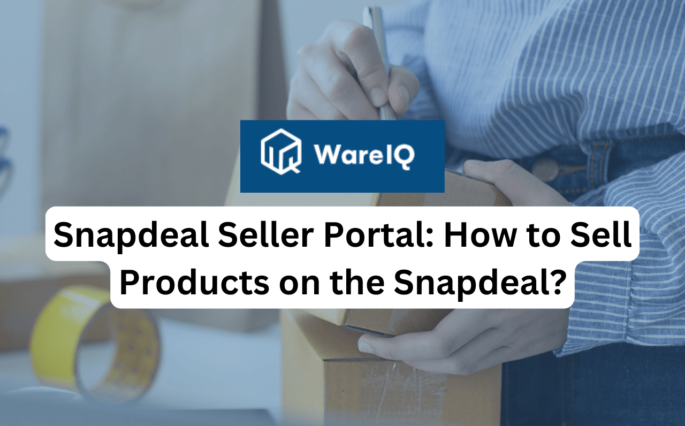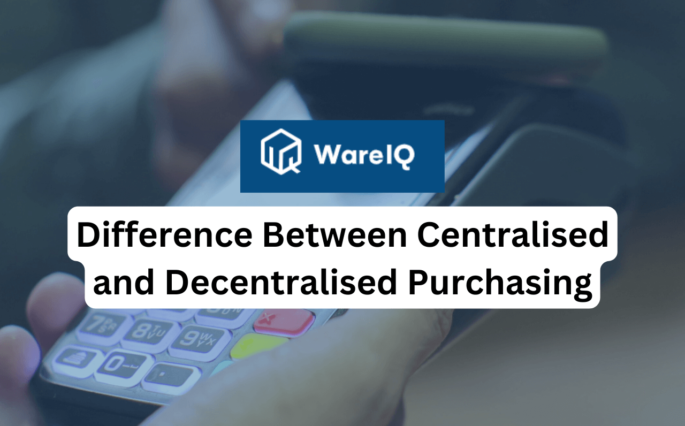Amazon’s Multi-Channel Fulfillment (MCF) Model Guide

Amazon’s Multi-Channel Fulfillment (MCF) program, one of several fulfillment options for sellers, stores your inventory in Amazon’s warehouses, handling fulfillment across specific channels.
While MCF has advantages, there are associated costs. Concerns have arisen over Amazon potentially using seller data to create private label products, causing brands to ponder whether to stay with Amazon, switch to a 3PL, or manage retail fulfillment in-house.
Choosing a fulfillment solution involves critical considerations impacting your bottom line, customer experience, shipping capabilities, and brand reach.
In this post, we will explore how Multi-Channel Fulfillment operates, its pros and cons, and alternative fulfillment options beyond Amazon Multi-Channel Fulfillment to support your business growth.
What is Amazon MCF?
Amazon Multi-Channel Fulfillment is a fulfillment solution utilizing Amazon’s warehousing capabilities to store merchandise and fulfill orders, serving both Amazon’s platform and a brand’s own website. This program falls under the umbrella of Fulfillment by Amazon (FBA) services.
How Amazon Multi-Channel Fulfillment Works
1. Inventory Storage at Amazon Fulfillment Centers:
– Begin by storing your inventory at Amazon’s extensive network of ecommerce warehouses. It’s important to note that Multi-Channel Fulfillment is currently available only in the USA. When your products arrive at Amazon, they will determine the optimal warehouses for storage.
2. Website Orders Automatically Routed to Amazon:
– Seamlessly integrate your website with Amazon’s system. This integration ensures that any orders placed on your website are automatically transmitted to an Amazon warehouse, streamlining the fulfillment process.
3. Order Processing by Amazon:
– Upon receiving an order, Amazon takes charge of the entire fulfillment process. This encompasses the crucial steps of picking, packing, and shipping the order to the customer.
4. Order Fulfillment with Shipping Options:
– Amazon offers a range of delivery options for fulfilling the order, including various shipping speeds. Customers can choose the delivery speed that suits them. However, it’s worth noting that Amazon gives priority to FBA (Fulfillment by Amazon) orders over MCF (Multi-Channel Fulfillment) orders from your website, potentially leading to slight delays for MCF orders.
5. Efficient Fulfillment Management:
– Amazon’s well-established fulfillment infrastructure ensures efficient and reliable order processing. As a seller, you can rely on Amazon’s expertise to handle the logistics of fulfilling orders from your website, providing a seamless customer experience.
Amazon FBA vs. MCF: Key Differences
- Channel:
- FBA: Primarily for Amazon.com.
- MCF: Expands to the seller’s website and other marketplace websites.
- Shipping Options:
- FBA: Offers next-day and 2-day shipping (with potential disruptions during the pandemic).
- MCF: Provides 2-day, and standard (3-5 business days) shipping options.
- Fees:
- FBA: Includes a flat fee per unit a 15% referral fee on sales, storage fees, and shipping/handling fees.
- MCF: Charges FBA fees for Amazon Prime orders and separate MCF fees for non-Amazon orders, based on order weight and size.
Amazon MCF Pros
- You can store all your inventory for all channels in a single place.
- Amazon knows fulfillment. They have some of the best technology and processes to help them efficiently manage their warehouses with thousands of staff members in each fulfillment center.
- You are not required to generate invoices for MCF orders, as Amazon on your behalf will generate, and deliver invoices to your customers.
- With Amazon, you will get easy of operations and strict adherence to SLAs, in most cases
Amazon MCF Cons
- Only select sales channels is supported by Amazon’s MCF model
- Sellers can only sell products authorized and allowed by Amazon. Some product categories have restrictions from Amazon and need to be review by them. Amazon can choose not to fulfill these orders at their discretion.
- Slow shipping speed for non-Amazon orders where Amazon will take 2 business days for shipping, and 3-5 days as delivery.
- You can place orders for up-to 150 units per month, post which your MCF service will paused until the next month where the limit is refreshed.
- You can place MCF orders only where the customer has already pre-paid for their orders. MCF will not be able to collect cash on delivery or provide any other payment mechanism to the customer at the time of delivery.
- Orders placed on your website fulfilled through Multi-Channel Fulfillment also go in Amazon’s packaging. This dilutes your branding efforts as customers’ unboxing experience is covered in Amazon’s logo — not your branding.
- You are required to handle all customer returns and customer queries as per your own website policies, or policies applicable as per your sales channel. Amazon will not be helping with this making the process effort and time consuming and cumbersome.
How can WareIQ help with Multi-channel Fulfillment better than Amazon MCF?
- Pan-India network of seller flex compliant 24+ fulfillment centers operated by WareIQ, and shipping partners for last-mile delivery across 27000+ pin codes to store inventory closest to your customers and unlock fast last-mile deliveries
- Multi-Channel Fulfillment Platform with plug-and-play integrations across marketplaces (Amazon, Flipkart, Myntra, Nykaa etc.), D2C platforms (Shopify, Magento, Woocommerce etc.), WMS, and ERPs, to support fulfillment across distributors, flagship stores and eCommerce channels with analytics capabilities to assess operational performance
- Team of experts to seamlessly handle all fulfillment operations including returns management
- Smart inventory audit using handheld devices to minimize errors and ensure accurate inventory levels
- Proprietary returns claims management application to provide easy recording and access to media proofs of returned items and ensure zero revenue leakages due to delayed claims filing on marketplaces
- WareIQ’s Inventory Placement Program (IPP) to minimize stockouts, liquidate excess inventory, and improve product availability for key demand centers
- Easy combo creation and personalization – Combos/Kits curated by theme or a use-case, Thank You notes, free gifts, sampling, cross-promotional SKUs, and branded packaging materials








